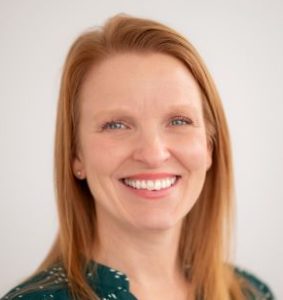

BALTIMORE — One of the newest nursing home division staff members at the Centers for Medicare & Medicaid Services offered up her best Notradamus impression for providers here Wednesday.
No, Lenise Cummings-Vaughn, MD, freshly arrived medical officer and clinical director for post-acute care, didn’t predict the world’s end date. But at the agency’s 2024 Quality Conference, she called on providers to get ready for the next big catastrophe that might strike nursing homes — most likely a weather-related disaster.
Seniors, especially those in long-term care, are most vulnerable to such events, she said.
And nursing homes looking to avoid mistakes made during COVID — particularly by responding to exploding infection risks with total social isolation of residents — should keep an eye to the skies, the oceans and the nation’s physical fault lines.
Climate change may very well bring about the next COVID-level disaster, and dislocation of residents could lead to the same kinds of social disconnects and disturbances to routine that sped the decline of so many nursing home residents during the pandemic. Cummings-Vaughn, a geriatrician who staffed a nursing home specializing in memory care, knows of what she speaks. She saw the consequences of too few supplies, too few visitors and too many distressed (or missing) staff members.
Her call for preparation Wednesday wasn’t a condemnation of nursing homes. She outlined the challenges providers faced and how the use of personal protective equipment, once received, continued to limit employees’ time and their ability to truly connect with their charges.
But she encouraged nursing homes to imagine obstacles and workarounds ahead of the next life-changing event for the sector. Providers should be working in combination with their peers and vendors to identify potential risks and to split the responsibility of planning and training for the eventuality. And it’s not enough just to plan for them, she said. Providers also must communicate their response strategies to current and incoming residents, helping to head off the communications crisis and anger from families seen in COVID’s earliest weeks.
Official changes expected
While Cummings-Vaughn didn’t explicitly speak to any updated emergency preparedness guidance for nursing homes, her presentation should serve as a reminder that CMS is widely viewed as working on revisions to those rules.
The Office of Inspector General has issued a series of state-level audits condemning providers and state survey agencies for letting too many emergency prep failures slide. Those lapses have run the gamut from weather or outbreak-related emergencies to life safety and infection control.
In a Pennsylvania investigation, auditors found every selected facility to have deficiencies that would put residents and staff at increased risk during emergencies such as fires, floods and infectious disease.
In November, a LeadingAge official warned providers that they should “keep an eye out for those things to be popping up” in some type of CMs regulatory action in the future.
While there’s been no news yet, the OIG has kept up the pressure. The latest audit, hitting Colorado, was published in February. It recommended the state work with CMS to develop a risk-based approach to identifying nursing homes at which surveys would be conducted more frequently, such as those with a history of multiple high-risk deficiencies or frequent management turnover; and work with CMS to develop standardized life safety training for nursing home staff.
In that case, Colorado itself told OIG to get CMS involved, particularly on standardizing staff training for emergency preparedness. The state survey agency encouraged OIG to engage with CMS “to review the need for enhanced federal requirements in this area.”
Cummings-Vaughn may be new to CMS, but she can clearly read the writing on the wall. And she’s given providers fair warning about the scariest parts.
Kimberly Marselas is senior editor of McKnight’s Long-Term Care News.
Opinions expressed in McKnight’s Long-Term Care News columns are not necessarily those of McKnight’s.




